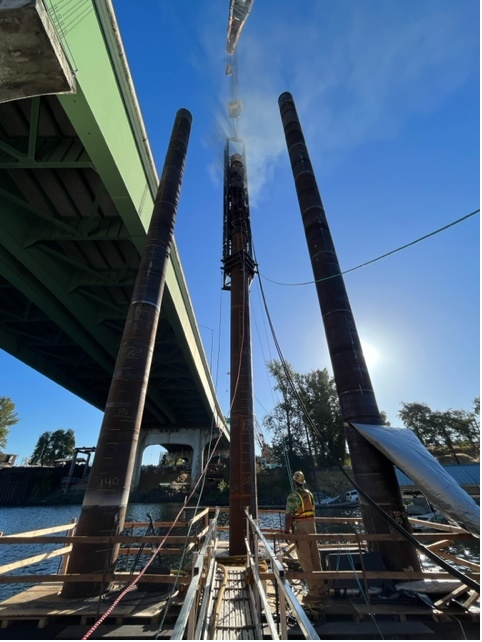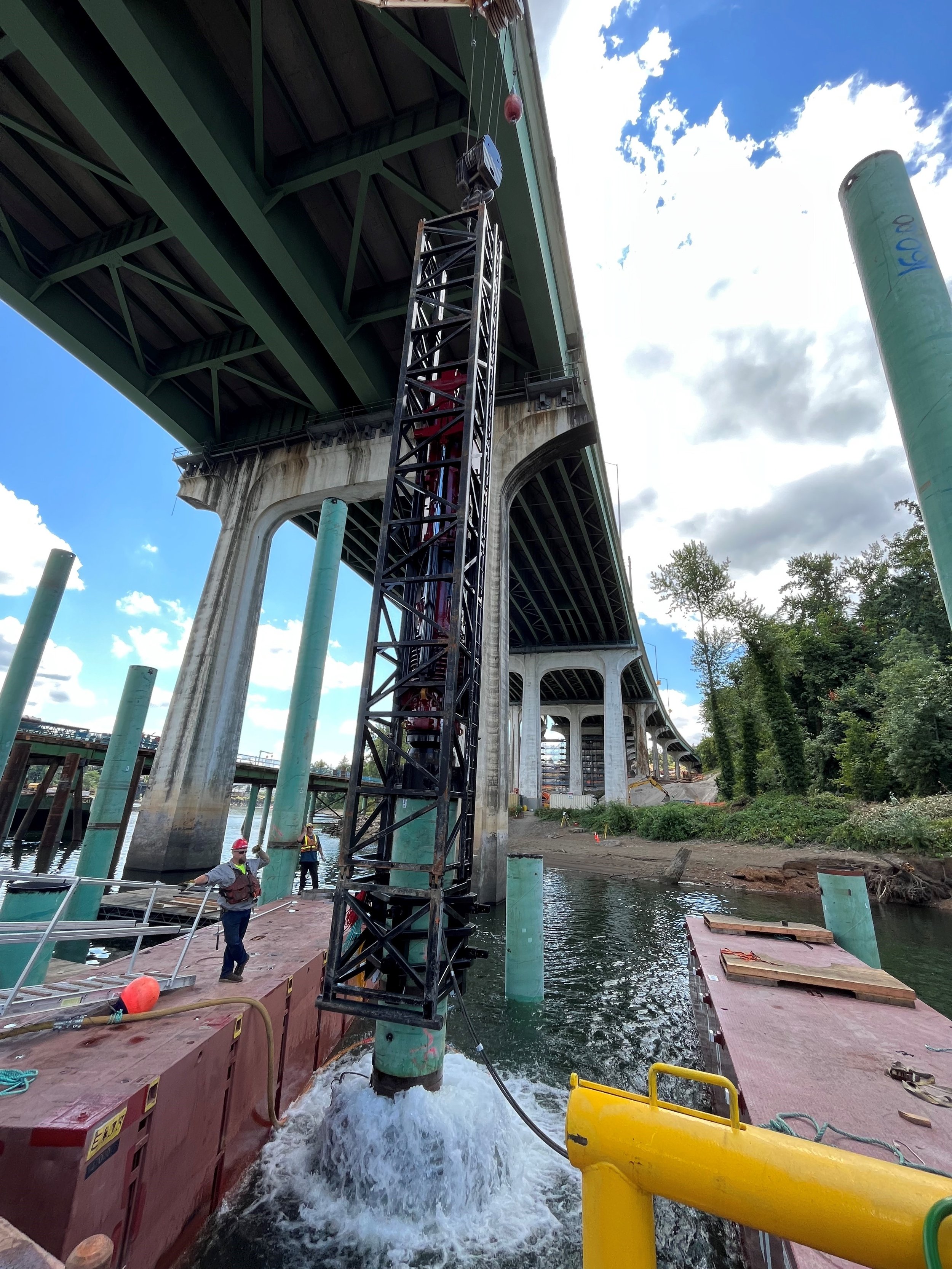Construction Meets Environmental Care in I-205 Abernethy Bridge Project
Aerial image of in-water work in the Willamette River.
The I-205 Abernethy Bridge Project is the Oregon Department of Transportation's (ODOT) most ambitious construction project in over 45 years and is the culmination of years of careful planning. One of the many considerations is ensuring construction activities occur while protecting the Willamette River, which the Abernethy Bridge spans between Oregon City and West Linn, and Abernethy Creek, which is in the construction zone and hosts salmon.
One of the project's strategies to protect the Willamette River and support construction is specifying when crews can perform work that requires them to be in the river. These “in-water work windows” were established in partnership with the Oregon Department of Fish and Wildlife (ODFW) and designed to reduce harm to the river’s 34 native fish species, some of which are threatened. The periods when in-water construction can occur fall outside when salmon spawn.
One construction activity impacted by these in-water work windows is piledriving. These in-water work windows mean construction crews only have a limited amount of time each year to piledrive, which is a critical process for widening and seismically upgrading the bridge. For 2023, piledriving will end in October.
Piledriving is necessary for crews to anchor multiple 24 to 36-inch steel pipes deep underneath the river. These pipes form the framework upon which four temporary work bridges are being constructed. These temporary work bridges serve as a platform for the personnel and machinery needed to work on the bridge. To make as much progress as possible during the limited in-water work window, piledriving occurs Monday through Saturday from 8 a.m. to 8 p.m. Despite muffling machinery associated with piledriving and using an installation technique that vibrates the pipes into position to the greatest extent possible to minimize hammer strikes, we know piledriving is disruptive, and we appreciate everyone’s understanding. While seemingly dissonant, the piledriving schedule is part of the project’s commitment to protecting the Willamette River’s inhabitants.
The in-water work windows are just one of the project's steps to protect the river. Other efforts include:
A robust wastewater treatment strategy that captures and cleans water within the construction area before it’s released into the Willamette.
Improving fish access to Abernethy Creek by removing artificial obstacles that previously blocked their path.
Establishing healthy riparian zones along the river within the construction area that provide habitat, improve water quality and stabilize soils.
The Willamette River is unique and contributes to this region being a haven for various species. The I-205 Abernethy Bridge Project understands the river’s significance and uses innovative ways to protect it.
Installing temporary work bridge supports into the riverbed.



